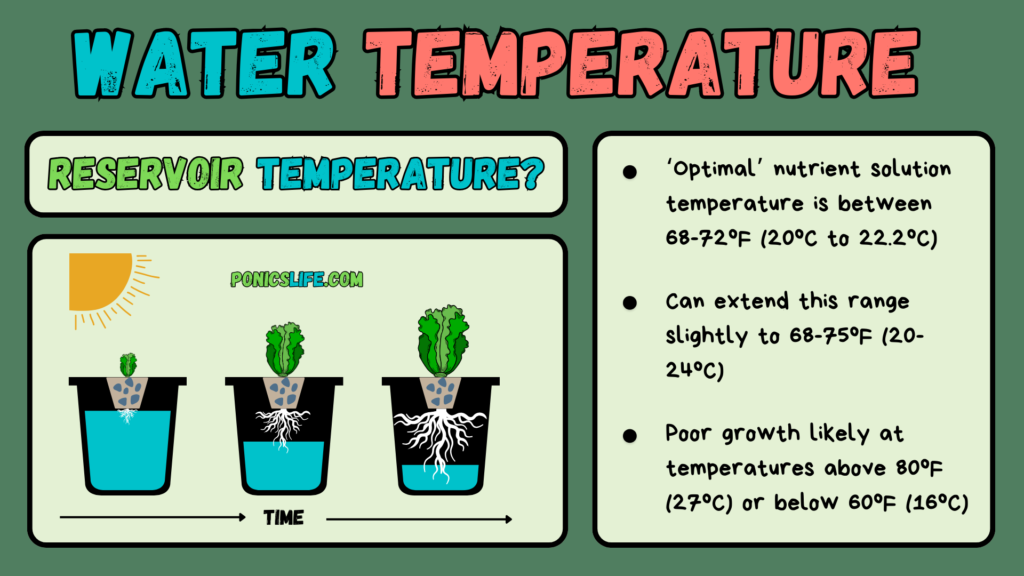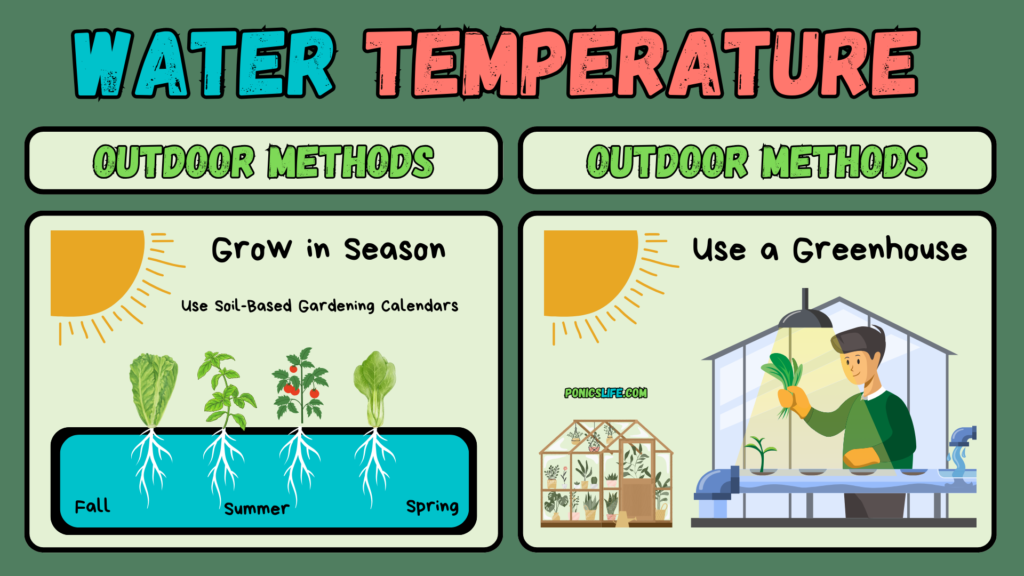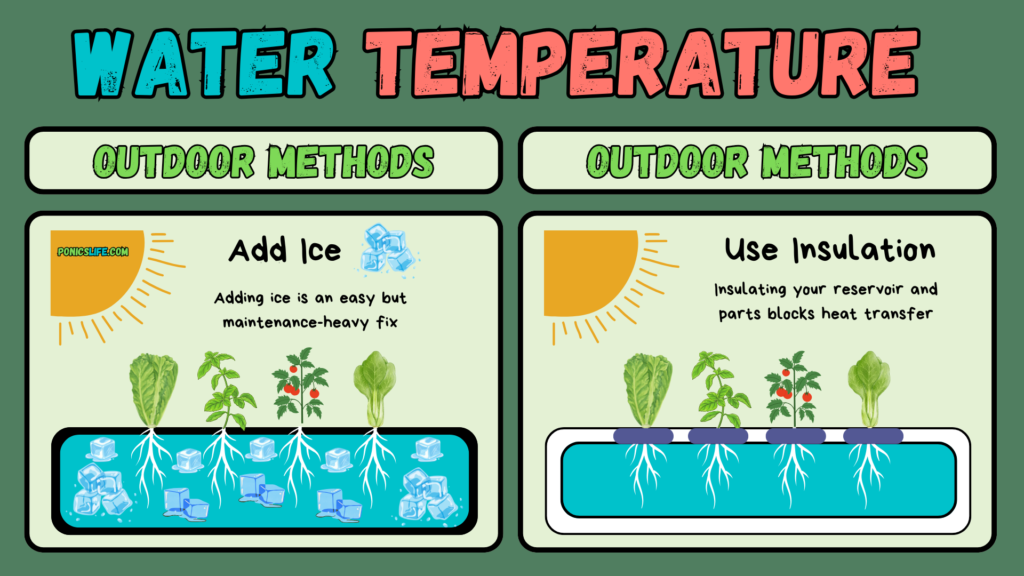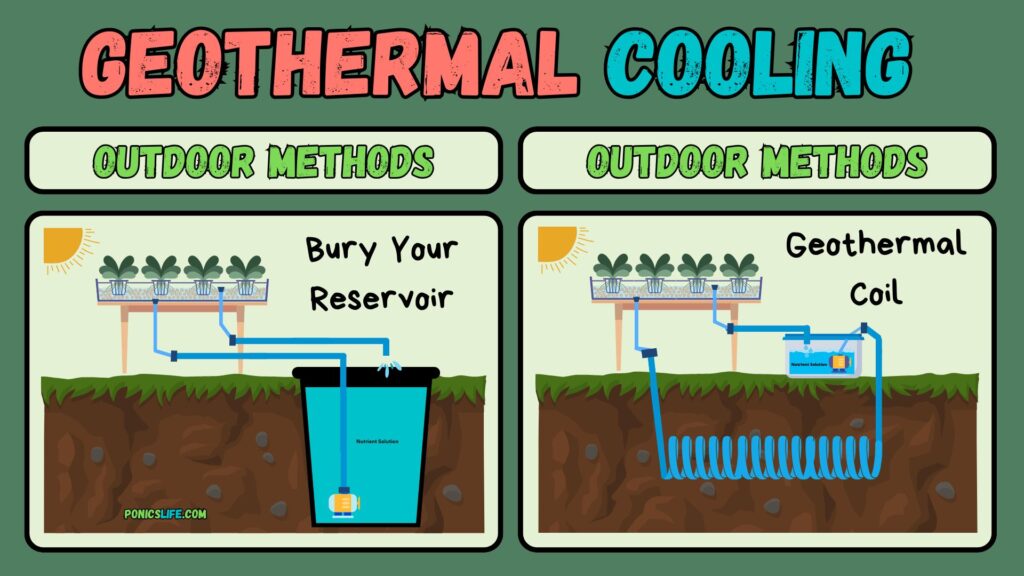In hydroponics, temperature is one of the essential factors that can either make or break plant health. Keeping the nutrient solution within the ideal temperature range is critical for promoting plant growth, nutrient absorption, and overall vitality. However, regulating the temperature of a hydroponic reservoir can be challenging, particularly if you’re growing plants outdoors where temperatures vary with seasons and time of day. This guide explores everything you need to know about water temperature and hydroponics, covering optimal temperatures, indoor and outdoor regulation strategies, and tips for keeping your plants happy and healthy.
What Temperature is Best for Hydroponics?
Most plants in a hydroponic system grow best in nutrient solution temperatures ranging from 68–72°F (20–22.2°C). This range supports efficient nutrient uptake while maintaining dissolved oxygen levels, helping prevent root diseases and promoting robust growth. Temperatures within 60–80°F (16–27°C) are generally safe, but anything beyond this range may lead to growth issues, especially if the solution gets too warm.

Why the Temperature Range Matters
The water temperature in hydroponics directly impacts several factors essential for plant growth:
- Nutrient Absorption: Roots absorb nutrients more efficiently in the optimal temperature range, supporting healthy foliage and rapid growth.
- Dissolved Oxygen Levels: Higher temperatures reduce dissolved oxygen levels, which can lead to oxygen-starved roots and root rot.
- Disease Prevention: Temperatures above 80°F (27°C) promote the growth of harmful bacteria and fungi, making plants vulnerable to diseases.
Maintaining Temperatures Inside
Indoor hydroponics typically benefits from stable room temperatures, so you often won’t need to worry as much about reservoir temperature control. Since most homes are kept within a comfortable temperature range, your nutrient solution should naturally stay within acceptable limits. However, in warmer indoor environments, you may still need to take some precautions to keep things cool.
Maintaining Temperatures Outside
Outdoor hydroponics presents unique challenges for maintaining water temperature, especially with temperature fluctuations during the day. Reservoirs exposed to direct sunlight can get too hot, while cooler nights can drop the solution’s temperature below the optimal range. Understanding these changes and how they affect your plants can help you better regulate reservoir temperatures.

How to Maintain the Right Temperature in Hydroponic Reservoirs
If you’re growing plants outdoors or in an environment prone to temperature fluctuations, here are effective methods for keeping your reservoir temperature stable.
Option 1: Grow in Season
Growing plants during their natural season can help reduce extreme temperature variations. For instance, if you’re growing leafy greens that thrive in cooler conditions, avoid summer months with high temperatures. Seasonally appropriate planting makes it easier to maintain a stable temperature within the ideal range. When in doubt, stick to soil-based gardening calendars (like the one’s we’ve outlined here).

Option 2: Insulate Your Reservoir
Insulating your reservoir is a simple yet effective way to regulate temperature. Using foam boards or reflective insulation around the reservoir helps keep external temperatures from affecting the water too much. This approach is especially useful in environments with extreme temperature swings between day and night.

Option 3: Provide Shade
Direct sunlight is one of the main reasons why reservoir temperatures rise quickly in outdoor hydroponics. Positioning your reservoir under shade or using shade cloths can make a substantial difference in keeping the water cooler. Shade also prevents rapid evaporation, which can concentrate salts and alter nutrient levels in the water.
Option 4: Bury Your Reservoir
Burying the reservoir in the ground is another practical method to maintain a stable temperature, as the earth acts as a natural insulator. The soil temperature is generally cooler than the air during the day and warmer at night, helping prevent both overheating and overcooling of your reservoir.

Option 5: Add Ice to the Water
For a quick cooling solution, adding ice packs or frozen water bottles to the reservoir can be an effective temporary measure. This method works well on hot days when temperatures exceed the recommended range, but it’s essential to monitor the temperature closely to avoid overcooling.
Option 6: Use Geothermal Coils
Geothermal coils tap into the stable underground temperatures, circulating cooler water through a series of pipes placed in the soil. By circulating water through these coils and back into the reservoir, you can achieve stable, cooler temperatures, even on hot days.
Option 7: Install an Aquarium Chiller
An aquarium chiller is another reliable option for maintaining a stable temperature in larger hydroponic systems. These chillers, designed for aquariums and hydroponic setups, can be set to a specific temperature to keep your reservoir cool in warm climates.
Option 8: DIY Your Own Chiller
If a commercial chiller is out of your budget, a DIY chiller can be a feasible solution. Using a small refrigerator and copper tubing, you can build a makeshift cooling system. The tubing runs through the refrigerator, cooling the water before it’s returned to the reservoir, creating a simple and cost-effective cooling system.
What’s the Best Choice for Maintaining Hydroponic Water Temperature?
In hydroponics, water temperature regulation is not one-size-fits-all, and the best choice for you depends on your setup and resources. For outdoor systems, burying the reservoir offers a natural and effective way to stabilize temperatures. If burying isn’t an option, other methods like providing shade and insulating the reservoir are practical alternatives. Indoor growers may only need to insulate the reservoir and use air conditioning to prevent excessive heat. For larger systems or extreme climates, investing in a chiller may be the most reliable solution.
Conclusion
Achieving the right water temperature for hydroponics plays a critical role in promoting plant growth, health, and productivity. Whether you’re growing indoors or outdoors, maintaining a stable nutrient solution temperature protects your plants from stress, ensures consistent nutrient uptake, and prevents diseases. With a variety of methods—from insulation to DIY chillers—regulating your reservoir temperature is achievable in any setup. Tailor these strategies to your unique environment, and enjoy a thriving hydroponic garden all year round.
FAQs
What’s the ideal temperature range for hydroponic reservoirs?
The best temperature range for hydroponic nutrient solutions is between 68–72°F (20–22.2°C), which maximizes nutrient absorption and prevents root diseases.
Why is my hydroponic reservoir getting too warm?
Reservoirs placed in direct sunlight, exposed to warm indoor temperatures, or with insufficient insulation may experience elevated temperatures. Using shade, insulation, or a cooling device can help.
Can I use frozen water bottles to cool my hydroponic reservoir?
Yes, frozen water bottles can be used as a temporary cooling method. However, monitor the temperature closely to avoid overcooling the water, which can shock plants.
Do I need a chiller for indoor hydroponics?
Indoor setups may not require a chiller if room temperatures are stable. However, a chiller can be beneficial in warm rooms or areas where air conditioning isn’t available.
How often should I check the temperature in my hydroponic system?
Regularly monitor your reservoir temperature at least once or twice a day, especially in outdoor systems where temperature fluctuations are more pronounced.
Can temperature fluctuations harm my hydroponic plants?
Yes, temperature swings can lead to nutrient imbalances, root diseases, and stress in plants, slowing down their growth. Keeping water within a stable temperature range is crucial for healthy plant development.
Where can I learn more about Hydroponics?
To learn more about hydroponics, you can download our free e-book below, explore the Hydroponics Information Center, or enroll in Hydroponics 101: Learn, Design, and Build Your Own System for a more hands-on approach.






